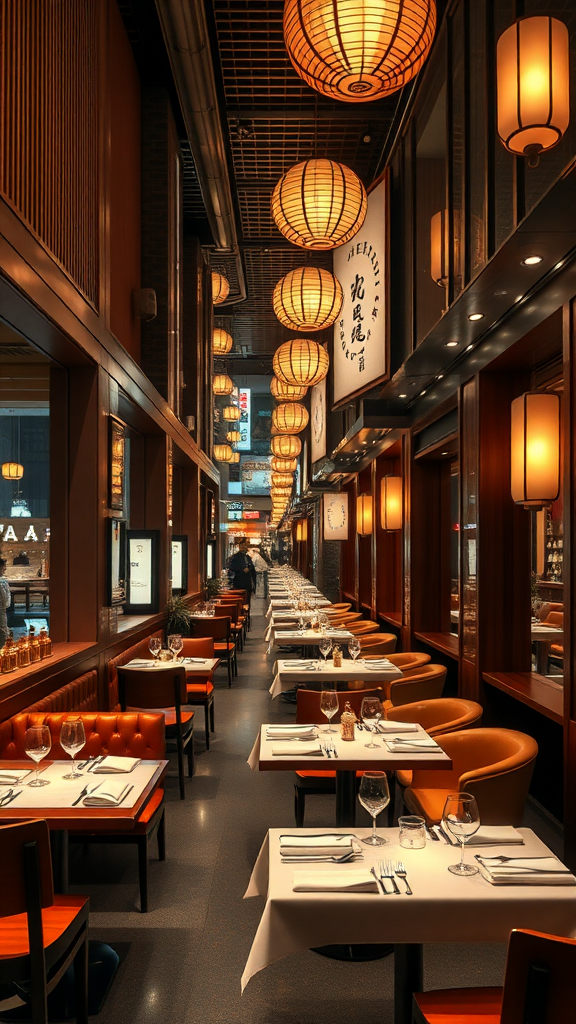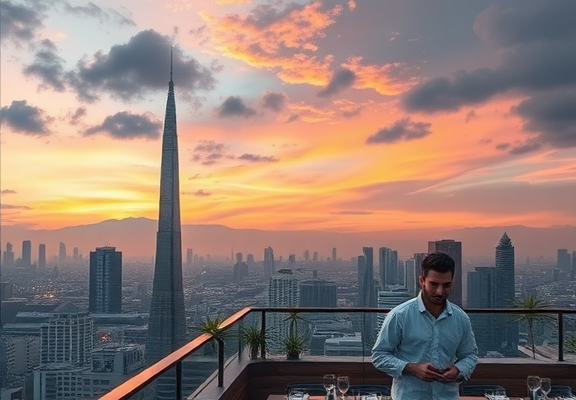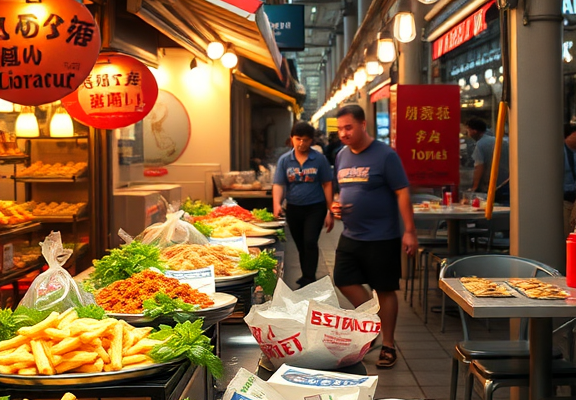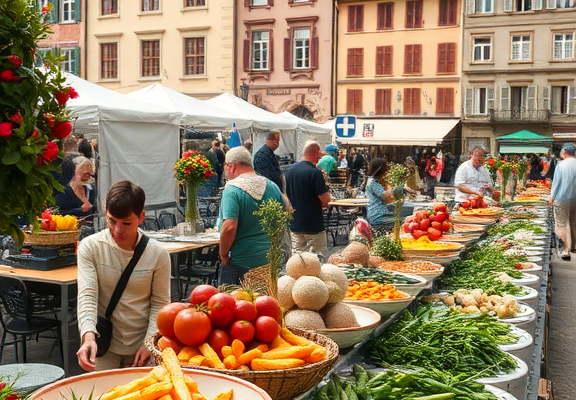The Unique Culinary Experiences Offered by Michelin-Star Restaurants in Tokyo
Tokyo stands tall as a culinary capital, celebrated not only for its bustling street food scenes but also for its prestigious Michelin-star restaurants. Dining at these acclaimed venues offers not just a meal, but a unique experience that marries artistry with tradition, innovation, and impeccable service. Each Michelin-starred restaurant possesses its unique flair, drawing locals and travelers alike to indulge in gastronomic excellence.
Thank you for reading this post, don't forget to subscribe!One of the defining characteristics of Michelin-star restaurants in Tokyo lies in the dedication to craftsmanship. For instance, many of these kitchens are led by chefs who have honed their skills over decades. These chefs take great pride in sourcing the finest seasonal ingredients, many of which come directly from local farmers and fish markets. This commitment to quality ensures that every dish not only satisfies the palate but also tells a story of its origin.
Exceptional dining experiences often begin long before the first course is served. Many Michelin-starred restaurants offer a multi-course menu that showcases the chef’s signature style. Each dish is meticulously presented, transforming food into a visual feast. For example, a kaiseki meal may comprise multiple courses, including appetizers, sashimi, grilled dishes, and sweets, each served on artisanal ceramic or lacquerware. This fusion of taste and aesthetics elevates dining into an art form.
Another unique aspect of Michelin-star restaurants in Tokyo is the intimate dining atmosphere. Many establishments feature a limited number of seats, allowing for a personal connection between diners and chefs. In places like Sukiyabashi Jiro or Sushi Yoshitake, guests often have the opportunity to watch chefs skillfully prepare sushi right before their eyes. This interaction enhances the experience, making each meal feel special and bespoke.
When dining in Tokyo’s Michelin-star restaurants, you might be surprised by the various cuisines represented, each offering a glimpse into a different culinary tradition. Consider the following notable experiences:
- Sushi: Renowned venues like Sukiyabashi Jiro focus on traditional Edomae sushi, where fish is selected for its freshness and taste.
- Kaiseki: This traditional multi-course Japanese meal, prepared at places like Kanda, reflects the beauty of seasonal ingredients, paired with exquisite presentations.
- French and Italian Fusion: Restaurants such as Les Créations de Narisawa blend French cooking techniques with Japanese ingredients, offering a unique gastronomic perspective.
- Tempura and Grilled Dishes: At places like Tenmasa, diners can experience tempura that is light and crispy, highlighting the natural flavors of the vegetables and seafood.
In addition to remarkable food, the service at Michelin-star restaurants in Tokyo is unparalleled. You can expect attentive staff members who anticipate your needs, adding a layer of comfort to your dining experience. This level of hospitality, known as “omotenashi,” defines the Japanese approach to service and ensures that every guest feels valued and catered to.
It’s important to note that reserving a table at a Michelin-star restaurant can be competitive. Many of these establishments require bookings weeks or even months in advance, so planning is key. Some restaurants may also offer lunch options, which can provide a more accessible way to explore their culinary offerings without the high prices typical of dinner service.
As Tokyo evolves, so do its Michelin-star restaurants. New culinary trends are emerging, with an ever-growing number of establishments earning and retaining their stars. This dynamic nature keeps the culinary scene exciting and continually attracts food enthusiasts from around the world. By immersing yourself in the experiences offered by these Michelin-star venues, you not only savor extraordinary flavors but also participate in a cultural journey, exploring the rich heritage of Japanese cuisine.
Whether you’re an adventurous foodie or simply looking to indulge, Michelin-star restaurants in Tokyo offer a memorable experience that is rich in flavor, tradition, and artistry. The unique culinary journey awaits you in this vibrant city, where each meal is a celebration of culture and elegance.
The Evolution of Tokyo’s Dining Scene and Its Impact on Michelin Star Ratings
The dining scene in Tokyo is not just vibrant; it is a remarkable tapestry woven from tradition, innovation, and cultural influences. Over the years, this city has transformed into a culinary powerhouse, catching the attention of food enthusiasts and critics worldwide, leading to an extraordinary presence in the Michelin star rating system.
Tokyo’s rich culinary history dates back centuries. The emergence of sushi and ramen in the Edo period marked the beginning of a culinary tradition that would flourish over time. Street vendors served quick bites, which laid the foundation for fast dining options still enjoyed today. It wasn’t long before the city began to embrace fine dining establishments that highlighted meticulous preparation, fresh ingredients, and artistic presentation.
Beginning in the early 2000s, Tokyo began capturing the gaze of Michelin’s inspectors. The Michelin Guide, founded in France, changed the game for restaurants globally. As the guide expanded its reach, Tokyo debuted its first Michelin Guide in 2007, showcasing a remarkable selection of restaurants that received prestigious stars meant to signify excellence in cuisine.
Several factors contribute to why Tokyo is home to the most Michelin-starred restaurants in the world, including:
- Ingredient Quality: Tokyo boasts access to the freshest seafood, seasonal fruits, and vegetables, thanks to its proximity to fertile farmlands and surrounding oceans.
- Culinary Tradition: The dedication to craftsmanship is apparent in both traditional Kaiseki meals and contemporary dishes.
- Innovation: The city embraces fusion and avant-garde cooking techniques that elevate dining experiences.
As the Michelin rating system evolved, so did the expectations of its inspectors. They began to favor restaurants that ensured a full sensory experience beyond taste. The ambiance, service quality, and overall dining experience are now vital elements under scrutiny. In Tokyo, this has resulted in a diverse landscape where you can indulge in world-class sushi, savory ramen, exquisite tempura, and innovative French cuisine—all garnering Michelin stars.
A great example of this evolution is the rise of casual dining establishments that receive accolades. Restaurants like “Fuunji,” known for its exceptional tsukemen (dipping noodles), have won high praise without necessarily fitting the conventional image of fine dining. This highlights that Michelin star ratings aren’t reserved for opulent surroundings but can also acknowledge culinary excellence in less formal settings.
In recent years, the Michelin Guide has reflected the burgeoning global interest in plant-based and sustainable dining. As environmental awareness grows, restaurants that prioritize organic produce or adopt eco-friendly practices are also getting recognition. For instance, places like “Itadakimasu,” offering vegan versions of traditional Japanese dishes, have garnered attention for their creativity and commitment to sustainability, thereby influencing how the Michelin guide appreciates culinary evolution.
The rankings from the Michelin Guide have, in turn, dramatically impacted Tokyo’s dining scene. More restaurants aspire to gain stars, resulting in fierce competition among chefs and restaurateurs. The quest for the Michelin star has pushed many to elevate their culinary standards, leading to a continuous cycle of innovation. Chefs travel, experiment, and collaborate, merging influences from different cuisines to create unique dining experiences that draw patrons from all corners of the globe.
Tokyo’s dining scene exemplifies how culture and culinary excellence evolve over time. The Michelin star ratings have both shaped and been shaped by the local and global culinary landscape. With each new rating cycle, the city introduces food lovers to innovative flavors and exceptional dining adventures.
Whether you are hoping to enjoy a traditional kaiseki experience or explore trendy bistros, Tokyo’s Michelin-starred restaurants offer a culinary journey that mirrors the city’s dynamic culture. Dining in Tokyo transcends satisfying hunger; it embodies a celebration of life, artistry, and community that leaves a lasting impression on all who partake.
Conclusion
Tokyo’s culinary scene is a vibrant tapestry woven with tradition and innovation, where Michelin-star restaurants stand as beacons of excellence. Diners venture into these esteemed establishments not just for a meal, but for a sensory journey that marries artistry with flavor. From sushi crafted by master chefs to intricate kaiseki dishes that reflect the seasons, each experience is uniquely Tokyo—an exciting blend of old and new, showcasing the city’s profound respect for ingredients and craftsmanship.
As we explore the evolution of dining in Tokyo, it becomes clear that the city’s Michelin-star ratings are more than just numbers; they symbolize a commitment to culinary excellence. Over the years, chefs have pushed boundaries, leveraging global influences while remaining anchored in traditional Japanese cuisine. This evolution has not only captivated local food enthusiasts but has also drawn international travelers eager to taste what the city has to offer.
Eating in a Michelin-star restaurant in Tokyo is about more than just the food; it’s about witnessing the passion and dedication that goes into each dish. This culture of continual improvement and admiration for culinary arts ensures that Tokyo remains at the forefront of the global dining scene. For those seeking exceptional flavors and unforgettable dining experiences, a visit to Tokyo’s Michelin-starred gems is a journey worth taking. Each meal is an invitation to indulge in the heart and soul of Japanese cuisine—an experience that transcends mere dining to become a cherished memory.






